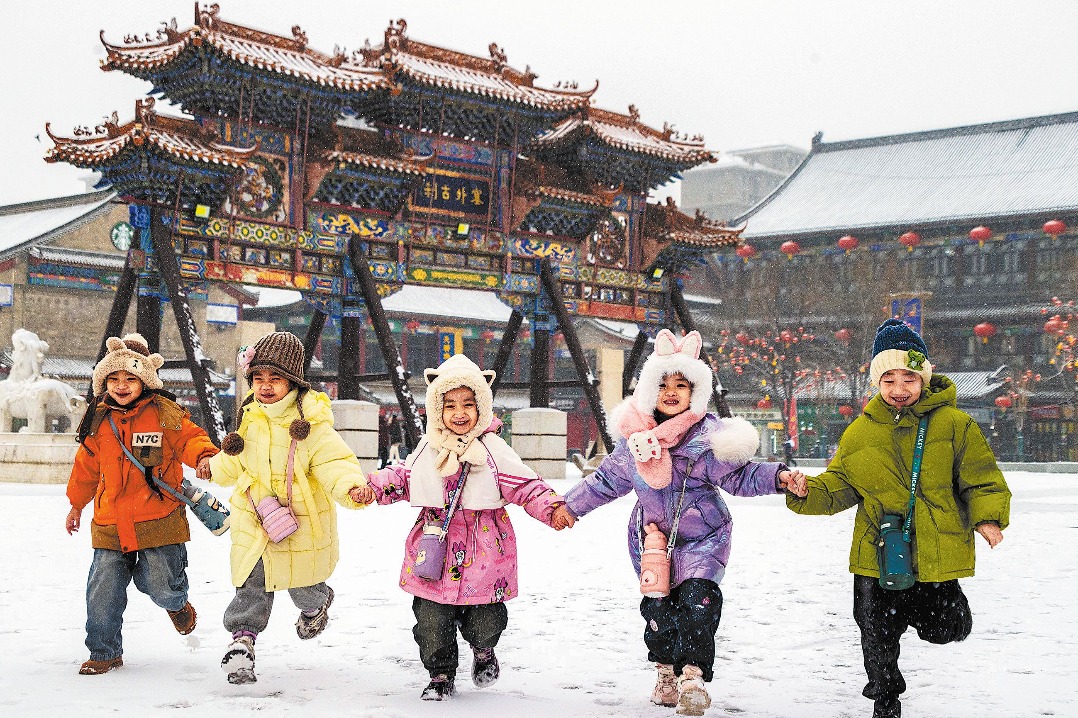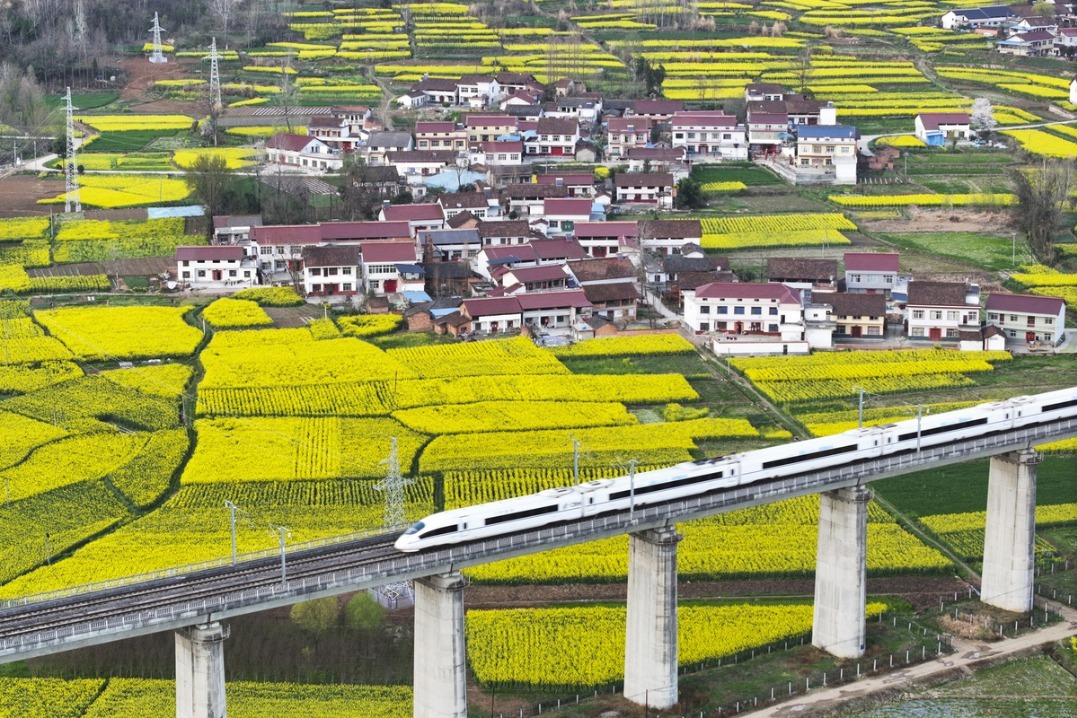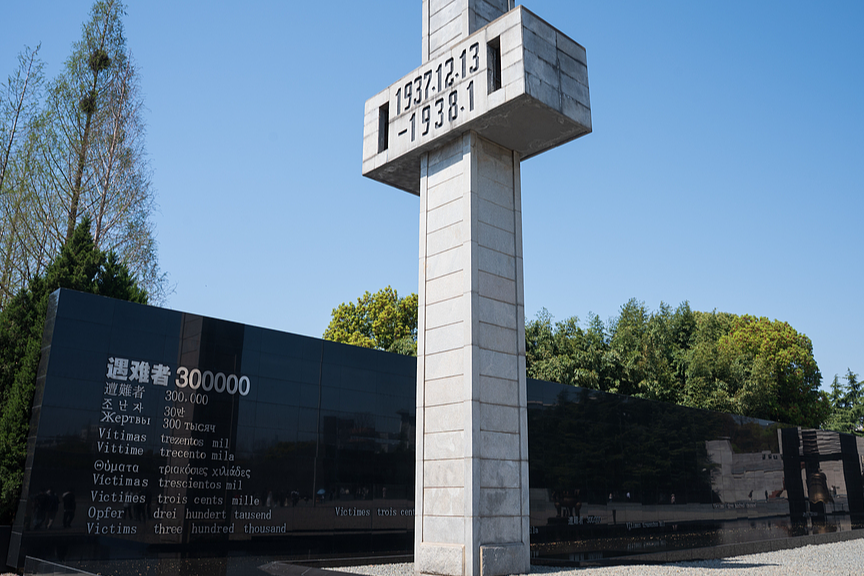Suzhou setting standards for preservation of cultural heritage

With its enchanting mix of canals, bridges and classical gardens, Suzhou in East China's Jiangsu province showcases the best of Jiangnan — the region south of the Yangtze River — while striving to protect and invest in its cultural heritage.
Pingjiang Road, a historical and cultural block in the northeast of Suzhou, is home to a slew of renowned traditional arts such as Su embroidery and woodblock painting. Taohuawu New Year woodblock painting, which traces its origins to the Song Dynasty (960-1279), is one of the most representative folk handicrafts in the city and was listed as a national-level intangible cultural heritage item in 2006.
Qiao Lanrong, a city-level inheritor of the craft, is working on a traditional New Year painting in a studio in Pingjiang.
"Taohuawu painting is the oldest form of color painting; it adopts a printing method of overlapped colors, with one color per block," Qiao said.
Taohuawu painting is regarded as a symbol of Suzhou's ethos and the innovative Jiangnan culture, and artists like Qiao have dedicated themselves to preserving and protecting the ancient craft. They've innovated their artwork in line with the aesthetics of modern youth and gone the extra mile to promote Jiangnan culture through exhibitions, offering introductory courses and cooperating with cross-industry brands.
These efforts help protect traditional culture while injecting new vibrancy into historical Pingjiang Road. As the most dynamic ancient area in Suzhou, the Pingjiang historical and cultural block is deemed a living heritage site in the city.
Over the past few years, as part of its effort to balance the protection of cultural heritage with modernization, Suzhou has implemented livelihood projects for the Pingjiang block, including the restoration of historical buildings and residences in 2010, a toilet improvement program launched in 2012, the conservation and restoration of old wells in 2015 and the remodeling and under-grounding of overhead power lines in 2018.
In June, the Suzhou city government launched a project to protect nine alleys in the Pingjiang block, along with a partnership program for ancient city protection and renewal.
The nine alleys protection project is aimed at improving and renovating characteristic areas to build a comprehensive zone with a blend of historical culture and modern civilization, while the partnership program is focused on mobilizing the resources of the ancient city, such as historical buildings and old residences, and revitalizing historical architecture and residences in the city's 19.2-square-kilometer historical area.
"The conservation of a historical city is a persistent and long-term effort that requires a deep and solid approach with a sense of reverence and admiration at all times," said Cao Lubao, Party secretary of Suzhou.
Cao said Suzhou should stand at the summit of preserving Chinese civilization, enhancing urban cultural confidence and building a people-centered city to promote the development of historical city conservation.
The city also needs to promote its high-quality development by featuring an area for innovation and as a model representing Chinese-style aesthetics and a happy community with quality welfare while striving to present a world-class historical and cultural city full of charm and vitality, Cao added.
Apart from the government's policies and measures on protecting the ancient city, local artists are promoting Suzhou's charm and history through their creations.
Yang Mingyi, 80, is an ink-color painter who hails from Suzhou. For decades, Yang has also served as an unofficial cultural ambassador of Jiangsu culture by creating a series of works featuring Suzhou and Jiangnan.
Yang recently completed a masterpiece themed on Jiangnan bridges connecting five continents. The more than 11-square-meter artwork, which is the largest of Yang's latest eight works focusing on the burgeoning development of the Jiangnan water town, took the painter about three months to finish and was finally unveiled to the public in June.
From unique water town depictions of ancient bridges, streets and towers to Jiangnan-style landmarks, the artist said he focused on featuring the prosperity and ethos of Jiangnan in this work.
"I hope to express my latest insights into Suzhou, Jiangnan and the world through ink and brushwork," Yang said.
"Suzhou is amazing. When I was studying in the United States, I never thought that my hometown could develop so fast.
"Now, no one dares to look down on Suzhou. Because of its rapid economic development, our people's living standards have improved and China has truly gone global. What makes me even happier is that Suzhou still retains the pure Jiangnan culture."
After studying and living in the US for 12 years, Yang returned to Suzhou and came up with the idea of promoting his hometown's culture through bridge paintings. He spent nearly two years drawing 100 bridges and demonstrating his technique at Suzhou Museum.
"These (bridges) were seen everywhere in my childhood, but now they've disappeared. So it is a big issue on how to protect our hometown, the water town," Yang said.
"I think I have to depict the era as well as showing the artistic essence left by our ancestors. This is what I have been thinking about and why I decided to paint a grand Suzhou," he added.
Over the past few years, Yang's efforts to create works that reflect Suzhou's characteristics and development have been well received.
"Suzhou is definitely a model of Jiangnan because it has a deep historical and cultural foundation that we must express," he said. "Painting Jiangnan and the water town is my lifelong mission. I am working tirelessly toward this goal, and I believe that my paintings will move everyone."

Today's Top News
- China holds national memorial for Nanjing Massacre victims
- New plan will be a road map for a stronger future
- Taiwan's character of the year a vote against confrontation
- Strengthened resilience key for economy
- Video sheds new light on Japan's wartime atrocities
- Xi: World yearns for peace, trust more than ever






























